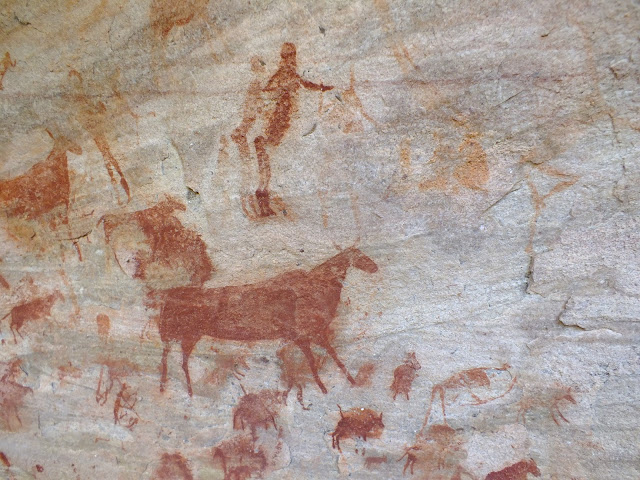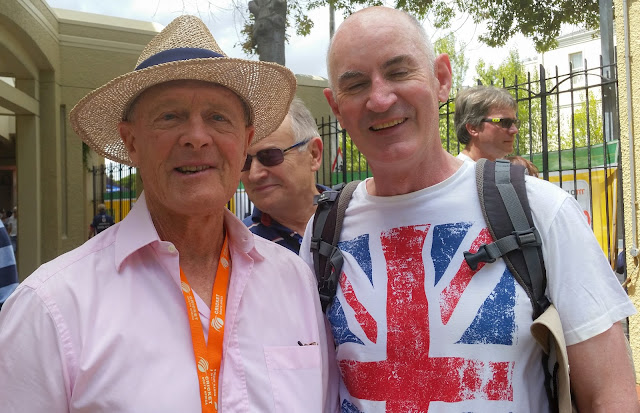South Africa – February 2016
In recounting a little, just a little, of our recent
visit to South Africa, I want to fly the flag for the country, and to persuade
you, if you needed persuading, that it is still a wonderful destination for
anybody during the British winter. And
you can do it cheaply too, if you wish.
A friend recently travelled there with Ethiopian Airlines (a bit of a
pause in Addis Ababa) for £430 return.
The huge depreciation of the Rand (<12 in 2005 when I last visited)
to 22 or so to the pound means that it is cheap to stay, travel, and eat there. I don’t deny however, that we are lucky to be
able to go.
The primary reason for our visit was to watch
cricket. This will be dealt with in
fairly short order. Although it was
wonderful to be at that iconic ground, Newlands, in Cape Town, we managed to
watch England lose twice to South Africa in the space of six days. Fortunately we did not go on to Johannesburg
to watch an even more ignominious defeat in the final match of the tour.
And then, for the philosophers among you; is a great
holiday defined by being able to catch up with, read, and put in the ‘done’
pile those books that you had earmarked for the trip? Or is it precisely because you didn’t manage any
of the books because the experience was so interesting, so all-embracing, and
so busy that you can define it as a great holiday. I didn’t manage much reading in South Africa.
Having visited South Africa many times before, mostly
starting in Cape Town, was there anything left undone? Well, yes, a lot. We climbed Table Mountain, or to be more
accurate we climbed the back of it, starting with a route up what is
technically probably the first of the Twelve Apostles, up onto the main
plateau, with its dips, valleys, and gorges (kloofs), and ultimately dropping
down the infamous Skeleton Gorge to Kirstenbosch Gardens in Constantia. On the way we saw some of the 1500 species of
plants that exist on this plateau – more than the entire United Kingdom. We did take a guide, a loquacious Afrikaner
farmer from Stellenbosch by the name of Arie van Wijk. It's probably a sensible move to take a guide. Lindsay informs me that there are more deaths on Table Mountain each year than on Everest... Another adventure was to the Cederberg
Mountains, about 200 miles north of Cape Town on the way to Namaqualand, the
area famed for its wildflowers in August and September. Despite mist rolling in from the Atlantic
down in the Cape, this large upland area of old red sandstone remains hot and
dry. We don’t feel we have done justice
to this area as yet…
Although it’s hard to have a bad meal in South Africa, I
should put in a mention for a restaurant whose chef is, I think, a meaningful
rival to Heston Blumenthal. Namely, the
Greenhouse Restaurant at The Cellars, Hohenort, in Constantia. The chef is Peter Tempelhoff (qv on the web). Working on my friend’s Ethiopian Airlines
budget, it is probably not much more expensive to travel to Cape Town to enjoy
the tasting menus at Mr Tempelhoff’s establishment than to patronise one of
Heston’s restaurants. It was a fantastic
experience.
Finally, two days in the relaxed and delightful company
of Johnny and Diana Hutton-Squire on their farm in the Elgin Valley. The pears were all picked the day after we
arrived (February 21st) and various apples commenced the day after. We walked a trail in the Kogelberg Mountains
from Harold Porter gardens in Betty’s Bay, and saw the rare Nivenia Stokoei, a
beautiful plant of the fynbos, in full azure bloom on the mountain side.
Does one feel a sense of guilt in South Africa? Yes, one does. Or at least perhaps one ought to. When one leaves a smart restaurant in a winery
in Constantia, full of the ‘ladies who lunch’ with elaborate hairdos,
obligatory Ray Bans, designer handbags, etc and then almost immediately drives
through the Cape Flats, one of the shanty towns, sanitized in local parlance as
‘informal housing’ then one is conscious that after 20 plus years of black
government there is still a lot to do. In
1997 we visited a coloured pastor living on the Cape Flats – he lived in the
only brick built bungalow in the entire area.
But there are many more brick built houses than there were and maybe
things are changing for the better. It’s
clear even from 6000 miles away there is still a long way to go. Self-serving black politicians lining their
own nests are not only irritating the whites, but they are beginning to be
acknowledged and seen through by an increasing black and coloured middle
class. (For those of you unfamiliar with
South Africa and used to American sensitivities, the word ‘coloured’ does not
have the same sense in South Africa).
The moral imperative that drove pioneers like Nelson Mandela is sadly
lacking in many of his successors, as indeed is true throughout Africa. Some of its leaders seem sadly ignorant of
realities of life and science. Mbeki did
not really believe AIDS existed and took the line that it was due to poverty,
thus setting preventive measures and anti-retroviral drug therapy back years;
he also failed to respond to concerns about crime and particularly violence to
women. Jacob Zuma, the current incumbent
as President since 2009, stated that he ‘took a shower’ after sex with an HIV
infected woman to reduce his risk of infection; has been involved in corrupt
arms deals; and has spent millions of Rand on improving his own residence. The country therefore, despite its fantastic
resources, still faces formidable problems.
It has one of the highest adult HIV/AIDS incidences in the world – about
18%, with around 5 million AIDS orphans.
Literacy rate is surprisingly high, about 86%, but this does not
translate into an adequate income for millions.
One consequence of the end of Apartheid is that there are now poor white
citizens using the soup kitchens as well as blacks. Despite the enormous mineral wealth, manufacturing
has been declining and due to aging and worked out mines, gold production has
halved since 2005. But still it is
thought that there are major untapped riches – with possibly 90% of the world’s
resources of platinum, 80% of the manganese, 73% of the chrome and 45% of
vanadium. The country, despite its large
size at 1.2 million sq km, about 5 times the size of the UK, has a population
of 53 million compared with the UK’s 64 million.
But there can also be sympathy for the early white
settlers. The lodge at Bushman’s Kloof
where we stayed in the Cederberg, now with expansive lawns where the weaver
birds gossip beside the lily pond, was once upon a time a farm where settlers
(a dirty word these days, implying the colonialist past) struggled to grow
potatoes and onions. Even today it is
many miles from the nearest small town.
What must it have been like for the farmers of the early 20th
Century? As the painfully cleared land
of upland pasture becomes taken over once again by the fynbos, and one kayaks
on the lake created by the dam that the early farmers built, it’s possible to
picture a life that was hard for everybody and not just the indigenous
population.
That’s enough philosophy.
On most holidays, a day or two before coming home we begin to feel that
we would like to be home. But not when
you visit South Africa during the depths of the English winter.
See the beauty for yourself…











































